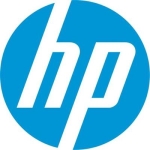WatchGuard EPDR is useful in large organizations with over 200 endpoints because the starting prices of the other tools in the market are higher for solutions like Trend Micro Worry-Free Business Security Services. WatchGuard EPDR offers a friendly user interface, which is very good for doing a lot of analysis and as a part of threat detection and response.
The zero-trust application service that WatchGuard EPDR runs is good. If there aren't any matches for a signature or a file, the solution will initially run them on a sandbox and determine if it is secure to run it in the environment. Ninety-nine percent of the time, it is done with AI, while only one percent of the time, it takes less than twenty-four hours for human intervention. You get a good experience with the tool, but sometimes it can be a bit stressful because the tool doesn't have the signatures to run it, making the product take twenty minutes instead of five minutes, but it is good.
The product's most valuable features are the zero-trust application service and its capability to detect threats and attacks.
The price of the product is not good for Latin America's market. The product is available at a very high price, making it an area where improvements are required.
I would like to see some of the extra models that are provided as add-ons, integrated with the technology, and provided to users as a standard tool. The add-ons provided by the product include areas like patch management and encryption. The integration capabilities provided by the product should include the other systems in the market and not just Windows-based systems on which WatchGuard EPDR presently focuses.
I have been using WatchGuard EPDR for three years. Earlier, it was known as Panda Adaptive Defense 360.
Stability-wise, I rate the solution a seven out of ten. With WatchGuard EPDR, the problem is not with the endpoints but with the way that the endpoints communicate with the cloud console.
Scalability-wise, I rate the solution a ten out of ten.
I rate the technical support a nine out of ten.
I have experience with Trend Micro Worry-Free Services Suite and Acronis. My company migrates a lot of the users from Kaspersky to WatchGuard EPDR.
The product's initial setup phase is straightforward. As it is not a tool that is secure by default, there are some configurations required before the initial setup process is carried out. In general, you need to tweak the tool a little bit to make it more secure.
The solution is deployed on the cloud.
With WatchGuard EPDR, I have seen a return on investment from the use of the product. After you deploy the product, it is really easy to go about the follow-up processes attached to the tool. You can also do huge implementations involving around 1,000 endpoints in a few hours instead of weeks, which is good. The problem with the price of the product stems from the fact that the market in Latin America is not used to paying a huge amount for an endpoint solution. Sometimes, users from the market in Latin America prefer to go for an endpoint solution that is not a complete product so that they can have a tool for their environment at a better price.
The product is available at a high price.
Against WatchGuard EPDR, I have evaluated Trend Micro, Acronis, and Check Point Harmony.
I would say that the product has been able to improve my organization's security posture by around 90 percent.
The product supports my company's remote workforce's security needs as it is really good for areas like URL filtering, and you can also match technologies like WatchGuard Passport with the DNS part in WatchGuard. You can also match the multi-factor authentication with WatchGuard AuthPoint. For the remote workforce, having DNS protection and protection against phishing, while also having protection for their credentials, reduces a lot of vulnerabilities for remote workers.
The zero-trust application service is the feature that I find to be the most effective for threat detection in the product.
Speaking about the capabilities of the product that have helped mitigate threats, I can say that my company has dealt with some users who are affected by some threats, after which we have had to isolate them and prevent the expansion of the attack in their environment, while also stopping privilege escalation and lateral movement. My company could remediate the one endpoint of the user environment that got affected because of the attacks, after which nobody else in the company was affected. Sometimes, there are some services that receive RDP brute force, after which the endpoint detects it and blocks the access automatically without any human intervention.
To those planning to use the product, I would say that they need to go with a trusted partner who has experience and is certified to deal with WatchGuard EPDR because such partners can provide an effective implementation process to users.
I recommend the product to those who plan to use it.
I rate the overall tool a ten out of ten.



















